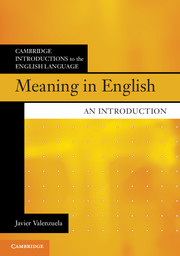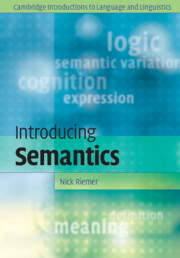Meaning in English
This lively, compact textbook introduces readers to semantics - the study of how we construct meaning in communication. Easy to follow, and with a clear structure, it explains formal terminology in a simple and understandable way, without using formal notation or logic, and draws on dozens of examples from up-to-date empirical research findings. Offering a tight integration of classic semantic issues with cognitive science, Javier Valenzuela provides a complete and coherent overview of the main topics in this area, including a review of the empirical methods used in semantic theorizing, and discussions of both non-traditional and new topics, such as how meaning is acquired by children and how meaning is constructed cross-linguistically. Featuring illustrations, exercises, activities, suggestions for further reading, highlighted key terms, and a comprehensive glossary, this book is accessible to beginners and undergraduates, including those from non-linguistic backgrounds with no prior knowledge of linguistic analysis. It will be an essential resource for courses in English language, English studies, linguistics and the cognitive sciences.
- Provides a complete and coherent overview of the main topics in semantics
- Offers an integration of classic semantic issues with cognitive science, addressing how cognition works through numerous examples of up-to-date empirical research findings
- Features key terms and a glossary, along with illustrations, examples, exercises, chapter summaries and further reading suggestions, enabling students to connect theory with practise
Product details
April 2017Paperback
9781107480162
302 pages
247 × 173 × 14 mm
0.6kg
Available
Table of Contents
- 1. What is semantics?
- 2. Analyzing meaning
- 3. Language and thought
- 4. Word meaning
- 5. Meaning relations
- 6. Acquisition of meaning and cross-linguistic meaning
- 7. Figurative meaning
- 8. Sentential meaning
- 9. Discourse meaning and pragmatics.




